Atatürk is not dead
Multidisciplinary state propaganda
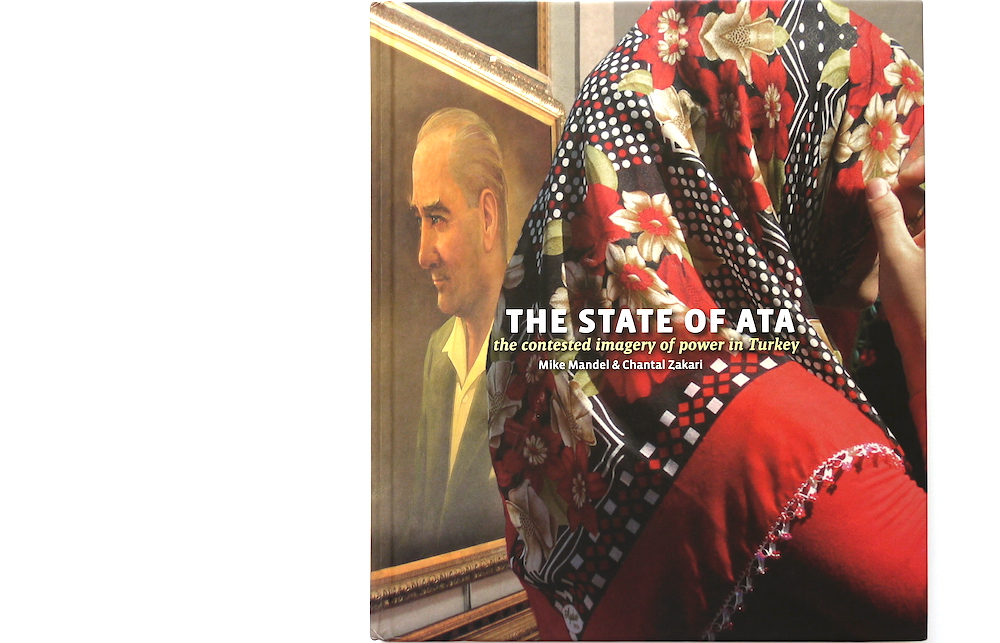
Speaking about Atatürk in Turkey might sound a bit pleonastic. Born in 1881, the man who founded the Turkish Republic in 1923 is an icon, a myth — the Prometheus of modern Turkey. 72 years after his death, he is still ubiquitous as ever. His portrait is displayed more than those of any pop star or living politician — especially now that national elections are only weeks away.
Atatürk’s image is so common that most Turkish citizens fail to question its presence. But, a bit like Chinese proverbs, patent statements often contain a more profound meaning. For example: “When the tree falls, the monkeys scatter”, or “Tens of thousands of bones will become ashes when one general achieves his fame”. For Chantal Zakari, a Turkish Levantine artist living in the United States, this propaganda seemed the most natural thing in the world growing up in Izmir. Then, she moved to the US to study, met – and later married – American photographer Mike Mandel, and began to question her identity.
Zakari and Mandel have spent the past 12 years meeting with people throughout Turkey and researching the Atatürk phenomenon. Published last year, the result is an impressive art book entitled “The State of Ata, The contested imagery of power in Turkey”. They have developed a highly original approach; this is no theoretical semiology of the great leader, but rather a collection of social experiments, travel reports, interviews and personal stories. It gives voice to people with various points of view, from Ultra-Nationalist to Leftists and Islamists, thus reflecting the diversity of Turkish society and its often passionate relationship with Atatürk. “The State of Ata” is full of exclusive visuals new and old, representing a unique and eternally recycling iconography. Mashallah conducted an interview with the authors, who here comment on some of the images from their book.
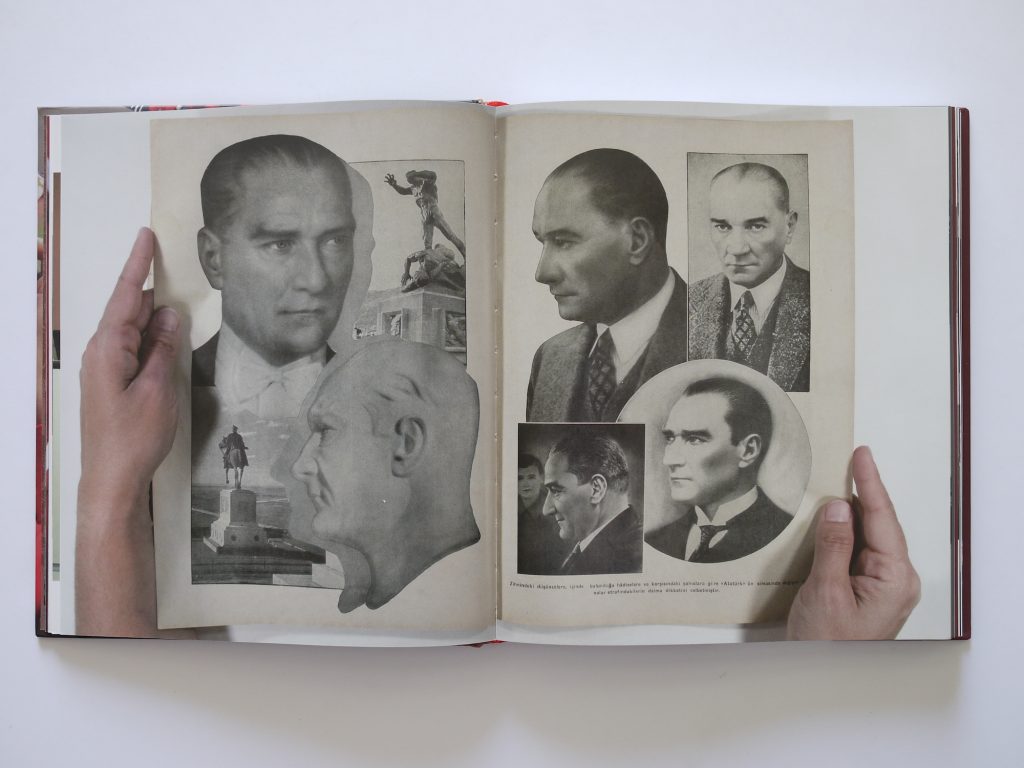
Mike – This is like Life magazine from the 30’s.
Chantal – I like the way the page is designed. We really didn’t have to do much to it.
Mike – It’s like paging through the past.
Chantal – Some people may want to hold onto the past.
“Atatürk’s ideology has become a religion, his mausoleum is the Turkish Mecca. When people become afraid of the Islamists they hold up his picture or put slogans in on the back of their cars. They use Atatürk the same way people in ancient times used images of a Gorgon to protect themselves from evil spirits. The difference between the Atatürk cult in Turkey and the leader cults in the Soviet Union is that in the communist countries it was the party that was important. After a period the party would produce a new leader, and then as the times or politics dictated, this leader would be replaced. For the Turkish army the leader never changes. We don’t know the names of the generals. They are all anonymous. Theirs is a collective identity, and Atatürk is the wonderful dead leader, the constant identity.”
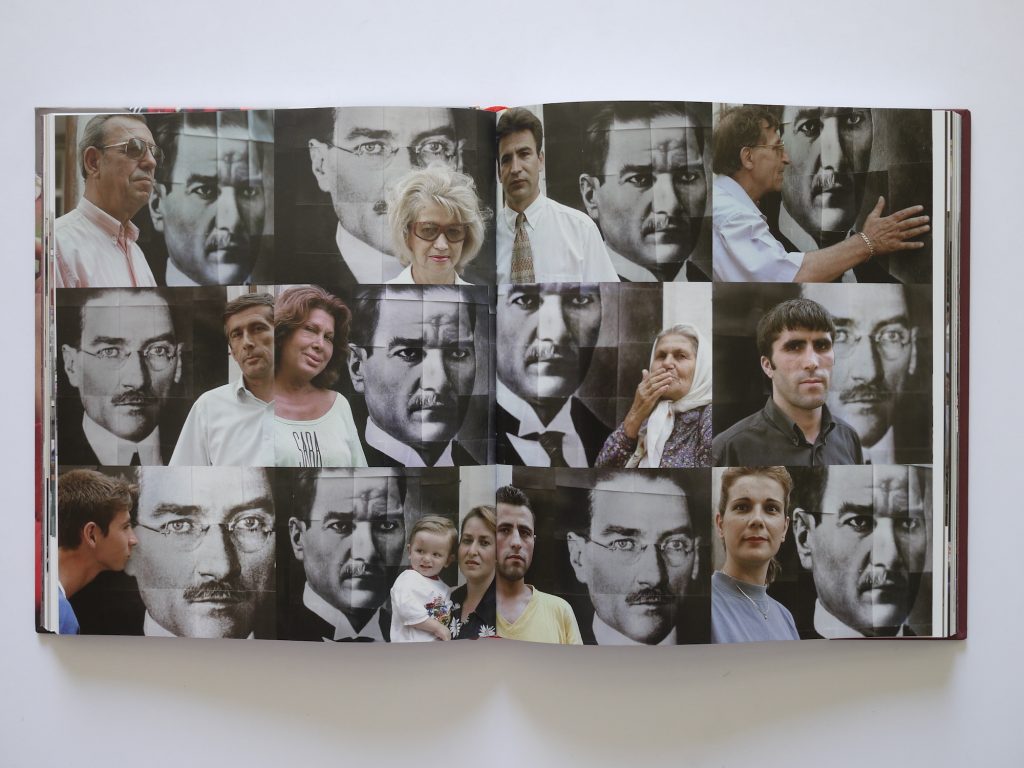
He said, “I’d like to have a picture. Our spirit, our mind, our brain, our heart, our aim is Atatürk.”
She said, “In this picture, he is my ideal leader; a person I want to be with, a person I want to die for.”
“I make a clear distinction between Atatürk and the Atatürk ideology that we see today, this extreme. Kemalism. It is important to have national heroes. I will always tell my two sons about the great revolutionary hero but I want them to think of him as a real person. The other day my younger son asked me if it was acceptable to touch an Atatürk sculpture. This made me very angry. Who teaches him these things? Of course one can touch an Atatürk sculpture, there is nothing sacred about him.”
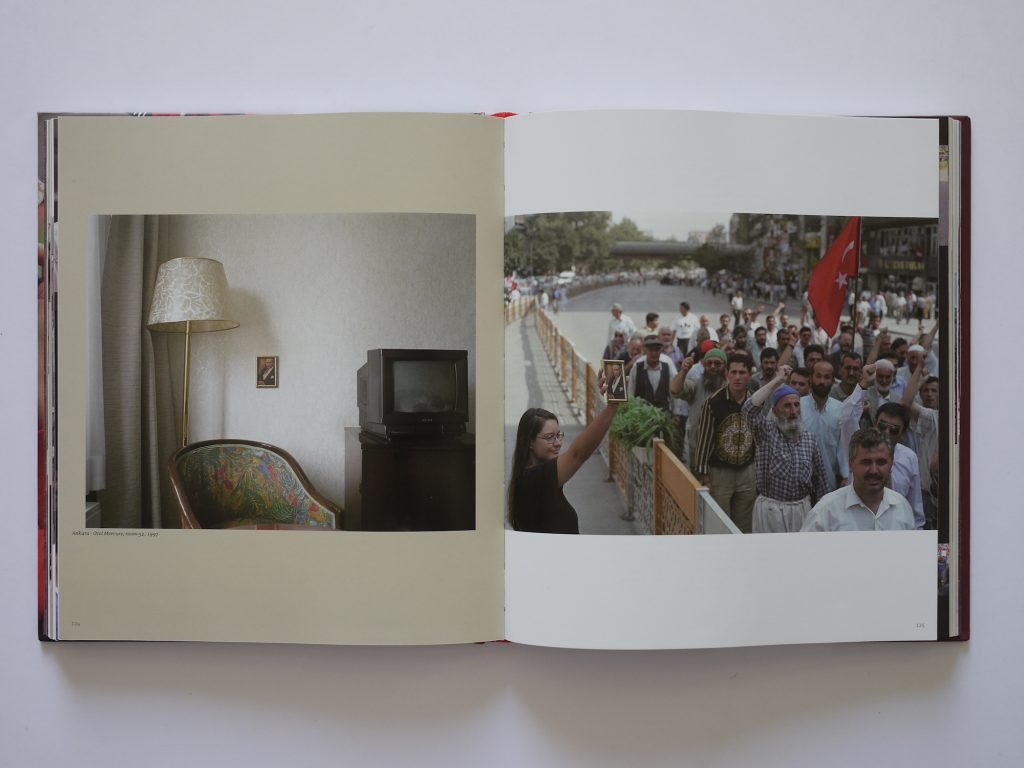
Chantal – This little picture fits so well into that space.
Mike – The picture is so small but it makes a big impact.
“The reporters are looking all over for the “Girl of the Republic.” They are able to trace us to our hotel in Göreme, and they are coming. They are already here. In the morning we go out to one of the village newsstands, and Chantal’s picture is on the cover of every national paper. “The Courageous Girl” apparently is bigger news than we understood. And she will continue to be news now that her identity is being revealed at this moment by the reporters who are following us, asking for pictures and interviews, hiding behind trees, photographing us while we eat lunch. And then we figure a way out: a press conference.”
– Mike Mandel

Chantal – I still wish we had stolen one of these. They are lost in the National Public Library archives, under a pile of newspapers. No one will ever find them.
Mike – You’re lucky I stopped you.
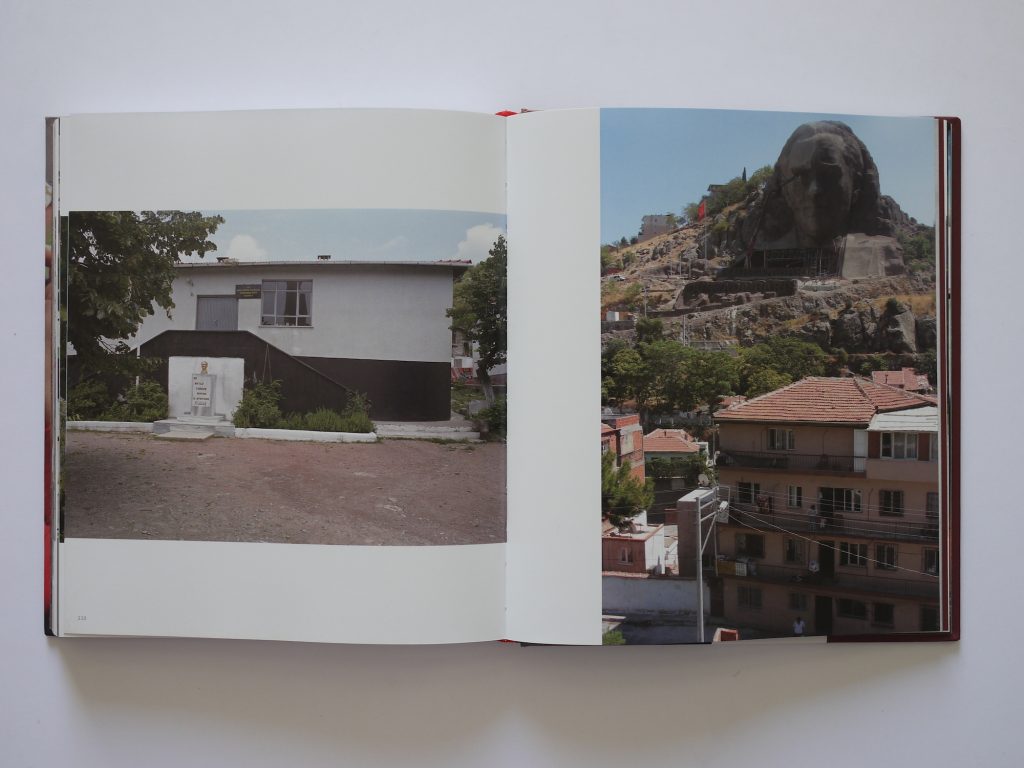
Mike – The smallest, the biggest…
Chantal – The brightest and the blackest.
“Aesthetics are also related to ethics and belief. A Western sculptor makes a reference to a long historical connection to Egyptian and Roman sculpture, which was primarily focused on representing mythological gods. So sculpture is based on the notion of beauty, because you cannot make a god look ugly. It is not possible because the sculptor himself is a believer and his client too is a believer, so this engenders an artistic ethic. As a result, aesthetic values developed in Western sculpture along with an aesthetic morality. Atatürk’s sculptures are also based on a similar moral aesthetic. The patron expects an idealized statue and the sculptor believes in the Atatürk ideology.”
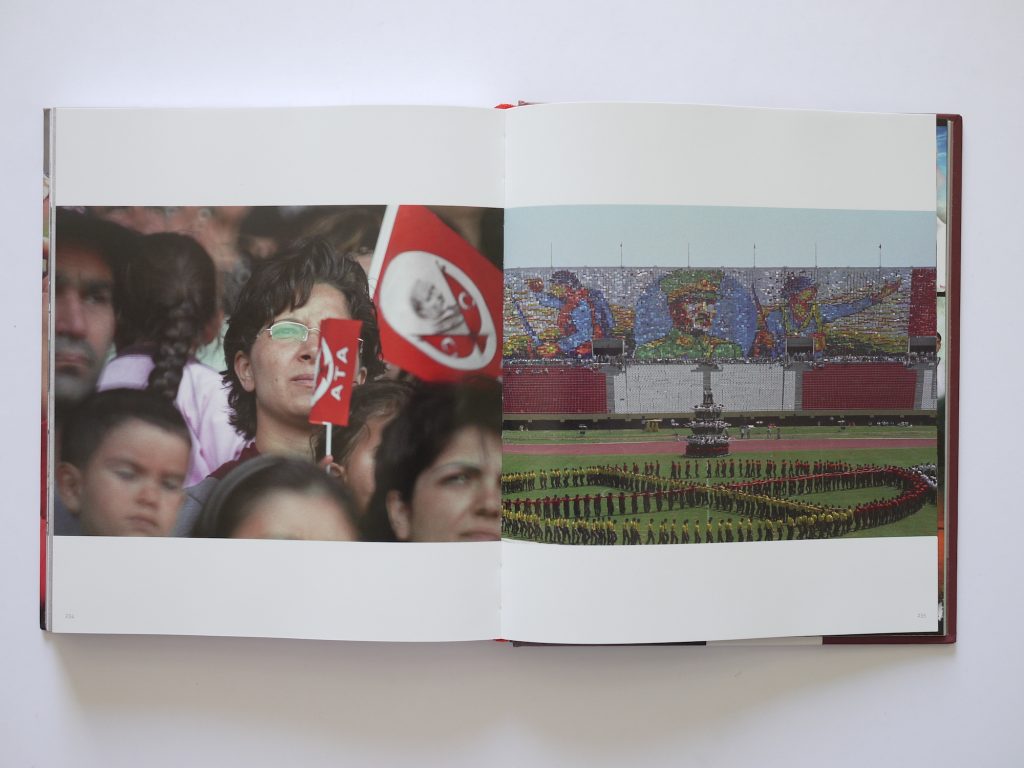
Mike – I can still hear the band playing.
Chantal – March at the right rhythm.
Mike – …unintelligible shouting through the loud speaker.
Chantal – Wave your flag.
Mike – …waves of kids like human pixels.
Chantal – Ne Mutlu Turkum Diyene! (Happy is the one who calls herself a Turk!)
“In Izmir, during one of these events, we were photographing a parade of uniforms. An elderly man walked past Chantal shouting out to no one in particular, but to anyone close by, and Chantal heard him say, “We lost all the battles, and yet we still celebrate our glory.”
– Mike Mandel
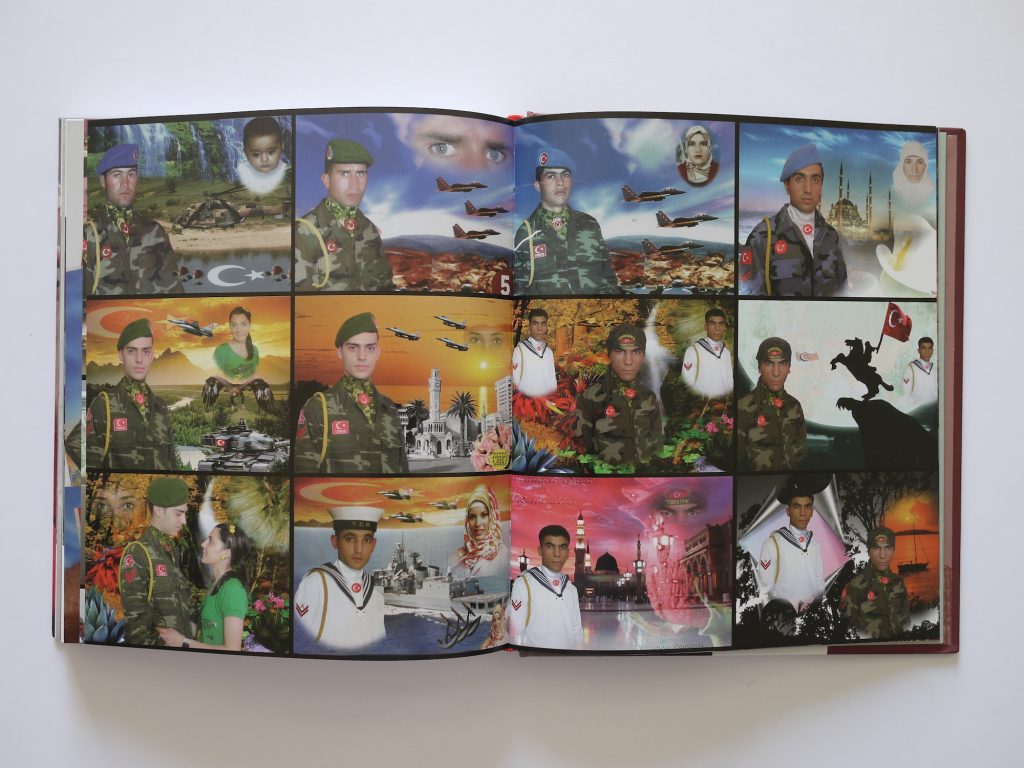
“So when you are ready to give your service to your country, to leave your home, your brothers and sisters, your mother and father, and maybe girlfriend or wife, and you’ve been sent to Izmir, ready to fight, or for whatever might come your way, then maybe one of the first things you do is visit the Foto Gül studio to have your portrait made. To get there, go to the main street in Kemeralti, the historic bazaar in downtown Izmir. Turn left at the second street. When you pass the Kemeralti Kebap restaurant on your left there is an indoor passageway. Take that to the end. You’ll find a bookstore and then a store where they sell wedding candy. Turn to your right, and there at the end is a small shop that looks a little like a cave, Foto Gül. Here is where you will pose in the uniform of the Army, Navy, Air Force, or maybe all three. You’ll bring pictures of your loved ones to be scanned and collaged with dramatic backdrops of exotic and worldly locations, the Grand Tetons, Hong Kong, the Amazon jungle, even Vietnam. And you will keep some of these pictures for yourself, and you will give others to your loved ones, so that you will remember each other until your return home. Insallah.”
– Mike Mandel
All the quotes come from the book The State of Ata. Pictures by Ismaël Abdallah.
2 thoughts on “Atatürk is not dead”
Leave a Reply
You must be logged in to post a comment.








Great idea! I love seeing new scholarship on Ataturk. I just ordered the book and can’t wait to read it.